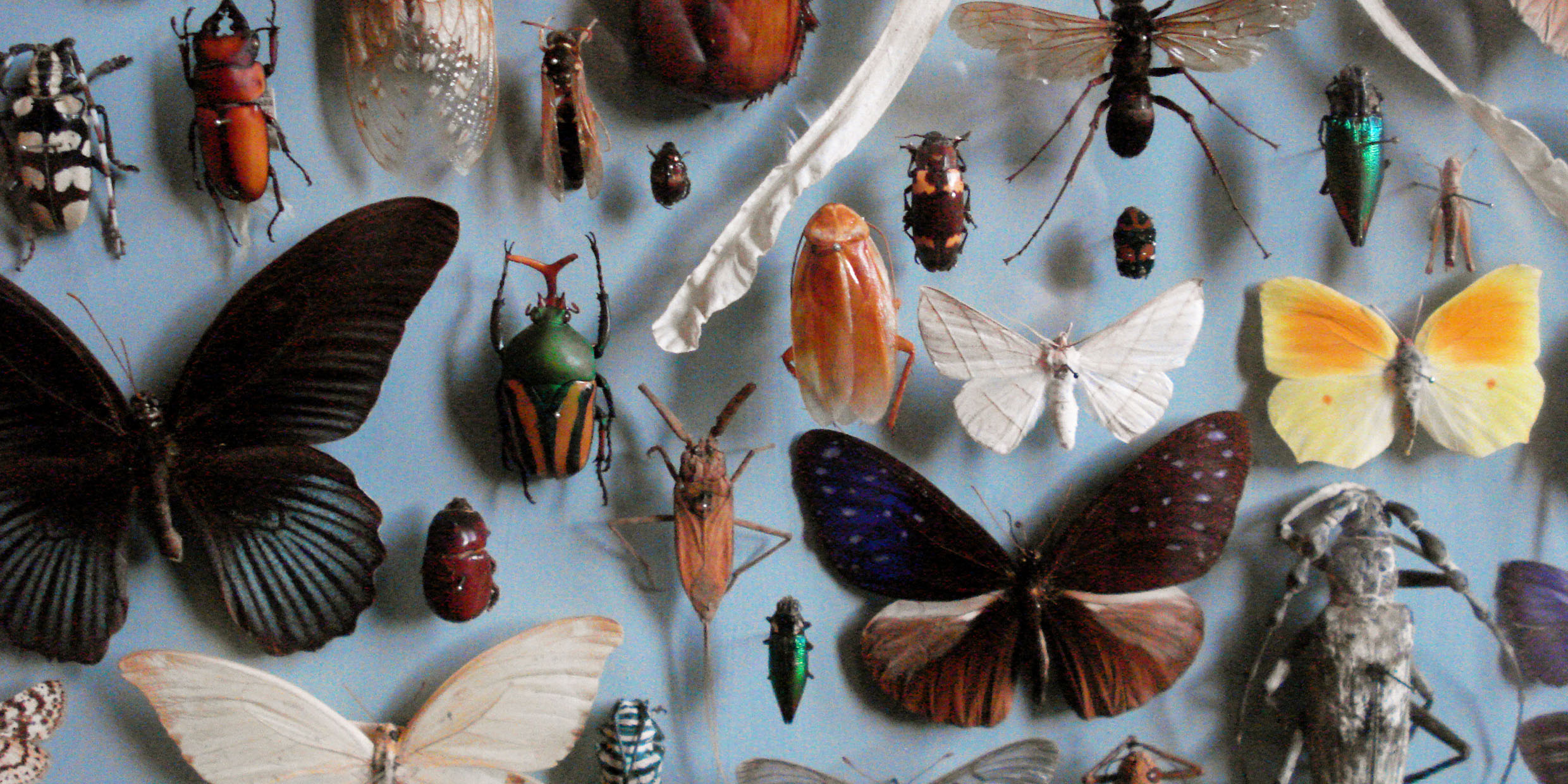Originally published 18 June 1990
Summer memories.
Of firefly evenings long ago in Tennessee. Lingering twilight, dark pines, crickets singing, stars just coming into the sky. Running on the long, sloping lawn catching up “lightnin’ bugs” in our hands. We squeezed them gently between our fingers to set their tiny fires alight, or dumped them by the dozens into a jar to make a lantern.
And cicadas! We caught them as they emerged from their nymphal skins, which they left attached to the trunks of trees, perfect replicas of themselves, crisp brown shadow-bugs. It was fun to place the hollow shells on Mom’s sleeve to give her a fright. We tied threads to the legs of live cicadas and set them buzzing at the end of tethers like self-powered kites.
When we had outgrown these idle pleasures we took up serious collecting, especially butterflies and moths. Cardboards from Dad’s laundered shirts served as setting boards. Mounting pins from Mom’s sewing basket. And pickle-jar killing bottles, filled with wads of cotton soaked in whatever kitchen fluid we thought would do the job. Alcohol, cleaning fluid, whiskey (if we could snitch it). The deaths were never quick.
At the end of a summer we might have a dozen shirt-boards filled with insects, neatly labeled and classified (“Big Butterflies,” “Little Butterflies,” “Moths”), our first excursion into science. There weren’t any science fairs in those days, at least not where I lived. No teachers or parents badgered us to produce some properly impressive project that might win a prize. We arranged and pinned our butterflies to their boards because it was fun to do: the pure pleasure of running barefoot through a meadow with Mom’s hairnet attached to a circle of coat-hanger wire in pursuit of a cabbage white, or feeling a fat moth flail its powdery wings within the prison of our cupped hands.
Butterfly collecting
The literature of amateur butterfly collecting is full of such disinterested summer pleasures. Virginia Woolf often returns in her writings to childhood pursuits of butterflies and moths. She took her collecting seriously, and with her siblings Vanessa and Thoby imposed upon her parents for proper apparatus: nets, collecting boxes, setting boards, killing bottles, cabinets, and reference works.
Here is how Woolf’s biographer Quentin Bell describes the children’s entomological activities: “As blood sports go, the killing of lepidoptera has a good deal to recommend it. It can offend only the most squeamish of humanitarians; it involves all the passion and skill of the naturalist, the charm of summer excursions and sudden exhilarating pursuits, the satisfaction of filling gaps in the collection, the careful study of textbooks, and, above all, the mysterious pleasure of staying up late and walking softly through the night to where a rag, soaked in rum and treacle, has attracted dozens of slugs, crawly-bobs and, perhaps, some great lamp-eyed, tipsy, extravagantly gaudy moth.”
The novelist Vladimir Nabokov is another writer who returns often to the butterfly collecting of his youth (as an adult Nabokov became quite an accomplished lepidopterist). From the age of seven, those flitting insects became his passion, provoked, in the first instance, by a rare and splendidly-colorful swallowtail butterfly found sitting on a honeysuckle bush in the garden of his home in Russia.
The agent Nabokov used to kill his specimens as a child was ether, and later, as a grown man undergoing an appendectomy, the smell of the fluid evoked a dream of the boy in the sailor suit killing and mounting an Emperor moth. He writes: “It was all there, brilliantly reproduced in my dream, while my own vitals were being exposed: the soaking, ice-cold absorbent cotton pressed to the insect’s lemurian head; the subsiding spasms of its body; the satisfying crackle produced by the pin penetrating the hard crust of its thorax; the careful insertion of the point of the pin in the cork-bottomed groove of the spreading board; the symmetrical adjustment of the thick, strong-veined wings under affixed strips of semitransparent paper.”
The joys of the amateur
The amateur entomologist, and particularly the youthful collector, has a certain advantage over the professional, as the great Harvard entomologist William Morton Wheeler observed in one of his essays. Wheeler lamented that professionals tend to become obsessed by problems and are less open to the emotional and esthetic joys of their discipline. He grimly imagined that he would one day go to the world beyond the Styx to find himself among professional biologists, condemned forever to solving minute problems of nomenclature and classification, while amateur entomologists roam among “the fragrant asphodels of the Elysian meadows, netting gorgeous, ghostly butterflies until the end of time.”
We can hope that Wheeler, with Woolf and Nabokov, has found his Elysian meadow. As for myself, I’m afraid I have become too squeamish to any longer find pleasure in collecting. What remains are intense memories of the insect-filled joys of summer (a huge polyphemus moth or an extravagantly-colored swallowtail butterfly might be the prize of a summer’s collecting, with an entire setting board to itself, resplendent among dozens of coppers, fritillaries, and blues), and a lingering respect for the profligacy of nature that can contrive such a diversity of animate beauty.



